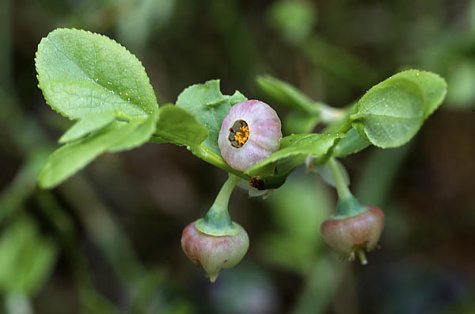Bilberries flowering
Photo: Arne Ader
Translation: Liis
Bilberry
Bilberry; European blueberry Harilik mustikas Vaccinium myrtillus
A large bilberry shrub in Estonian forests stops at a little less than half a metre in height, it has erect stems and well-branched green and sharp-edged shoots. The leaves are egg-shaped, slightly leathery and with a finely serrated margin. The freshly green leaves sit alternately on the sharply angular shoots and along the grooved stems rainwater runs down to the plant’s roots. All very rational, berries have to be produced during the hottest summer period.
The modest flowers are delicately greenish white with a slight pink tinge, placed singly in the leaf axils. The flower has a five-lobed calyx, ten stamens and one pistil. The hanging flower protects the pollen grains inside the calyx against drying. The bilberry is a very common plant growing in fresh coniferous or mixed forests; as a heather family plant it is a good honey plant, and a well known medicinal herb.
The bilberry plants are full of antioxidants, vitamins, minerals and many other wholesome substances. The therapeutic effect of bilberry leaves is most efficient if they are picked at the flowering time and made into a decoction to be used in case of diabetes: glycosides in the bilberry leaves lower the sugar level in blood as well as urine.
The berry-picking time does not start until in July...









